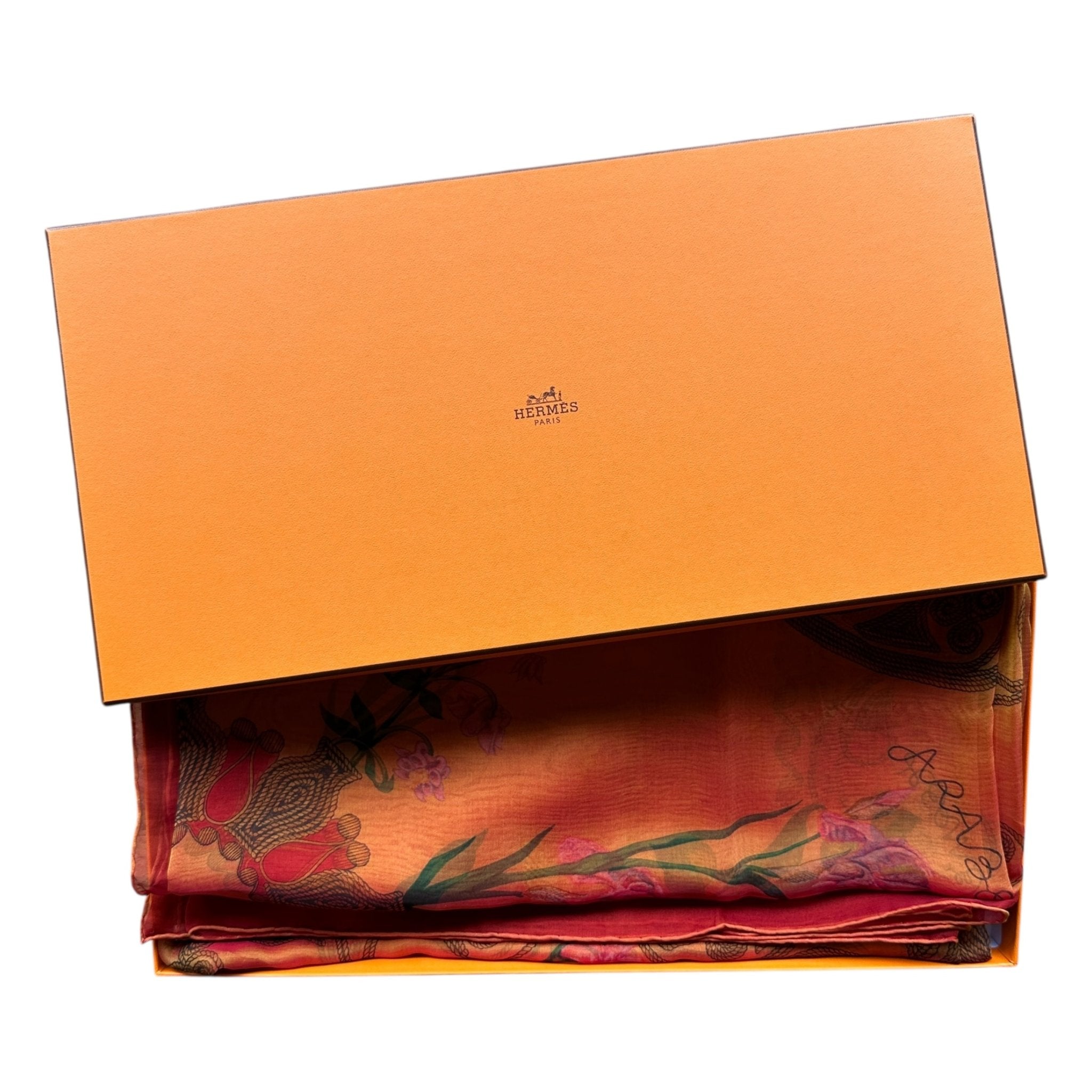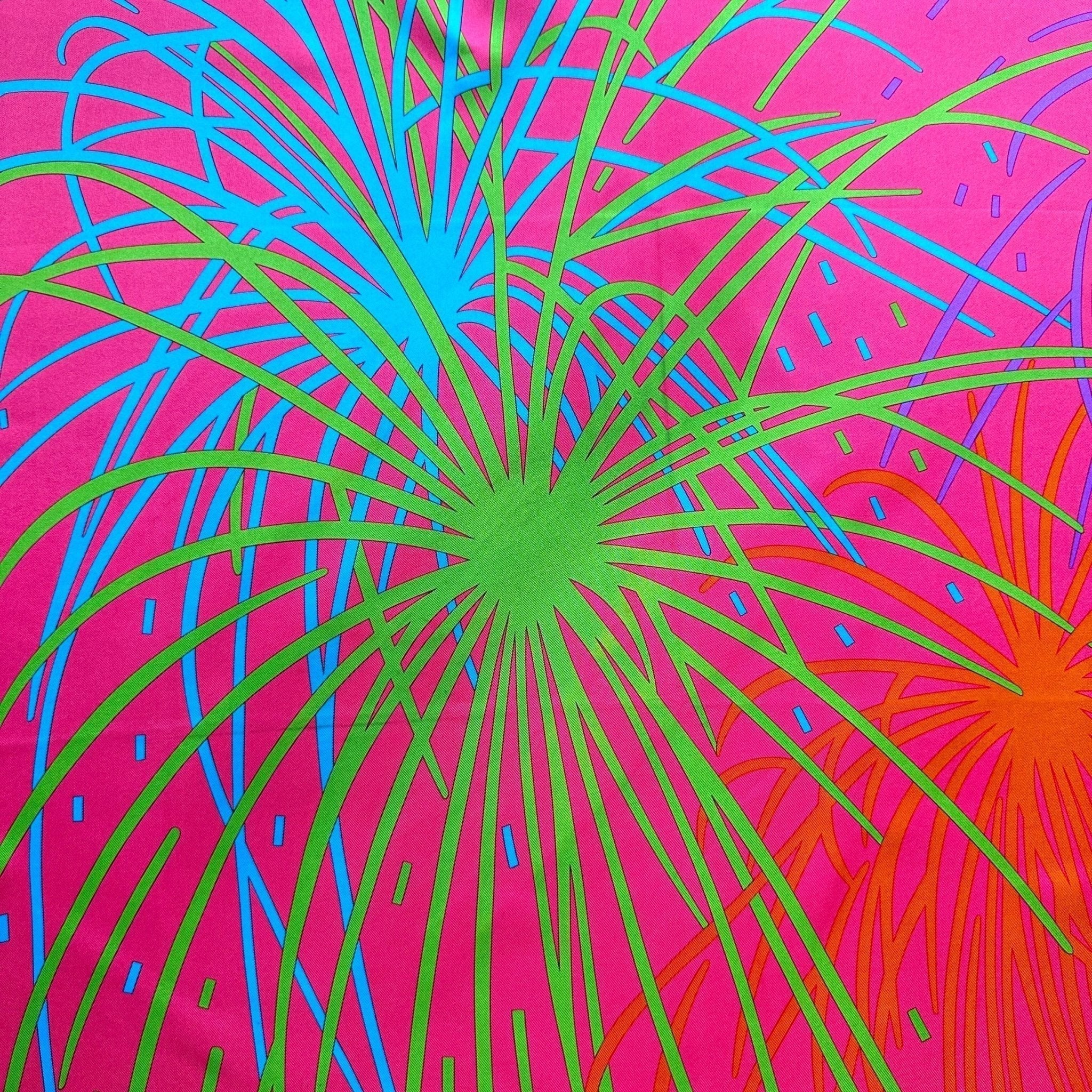Carré Hermès silk

At the origin of silk there is a butterfly. The Bombyx of the mulberry tree (Bombyx mori) or rather, to be more precise, its cocoon. The one that the caterpillar (the silkworm) will weave to prepare for its metamorphosis.
In China, where silk appeared between 3000 and 2000 BC, the discovery of the silkworm is attributed to Empress Leizu. Legend has it that she was drinking tea under a mulberry tree when a cocoon fell into her cup. As she wanted to get rid of it, a silken thread came loose and the more she pulled, the longer the thread lengthened. Wrapping it around her finger, she felt a pleasant warmth and had the idea of weaving it. The Empress talked about it around her, and this discovery spread, giving birth to sericulture (silkworm breeding).
A butterfly is 300 eggs which give 300 silkworms, so 300 cocoons and 450 kilometers of yarn and 450 kilometers of yarn is a Carré Hermès.
A cocoon alone can provide 1.5 km of filaments which, once extracted, go to the spinning mill to be twisted there, grouped together in a sort of large bundle of long white threads on "reels" to form a "fleet ", then "milled" that is to say twisted together to give them more solidity then woven and finally "dégrouse", that is to say washed with Marseille soap to make the fabric shiny, supple and silky .
There are different types of silk differentiated by their weaving: chiffon, silk organza, silk satin, silk pongee, silk twill, etc.
Silk twill is therefore not a material but a way of weaving yarn.
This technique, characteristic of the Carrés Hermès, makes it possible to obtain a more flexible but resistant silk which makes the fabrics almost wrinkle-free and highlights the magnificent colors of these Carrés that we love so much.
Sources:
BLOG

Pourquoi le Carré Hermès vintage est bien plus qu'un accessoire : L'art de l'investissement
Plus qu'un accessoire de mode, le Carré Hermès vintage est devenu un véritable actif financier, rivalisant parfois avec la bourse ou l'immobilier. Découvrez pourquoi collectionner la soie Hermès es...
Read more
Lumière et Métamorphose : La magie de la Soie Changeante
Plus qu'un tissu, c'est une illusion d'optique. Découvrez les secrets de la soie changeante, ce savoir-faire ancestral qui transforme l'étoffe en lumière.
Read more
Au-delà de la soie : Pourquoi le Carré Hermès vintage est l'investissement ultime
Plus qu'un accessoire, le carré Hermès vintage est un investissement patrimonial. Découvrez pourquoi ces œuvres d'art en soie prennent de la valeur et comment choisir votre pièce de collection avec...
Read more
Wlodek Kaminski : L'architecte des Lumières et des Couleurs des Carrés Hermès
Moins connu mais visionnaire, Wlodek Kaminski a marqué les carrés Hermès des années 2000 par son style graphique et ses palettes audacieuses. Découvrez son œuvre unique chez Carré Society.
Read more